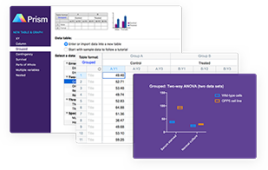W. John Kress, Ph.D., director, Consortium for Understanding and Sustaining a Biodiverse Planet, curator and research scientist, Smithsonian Institute, demonstrates how to capture an image of a tree leaf using his Leafsnap iPhone app, Thursday, April 28, 2011, at the Smithsonian Natural History Museum’s specimen storage room in Washington. (AP Photo/Cliff Owen) |
WASHINGTON
(AP) — If you’ve ever wondered what type of tree was nearby but didn’t
have a guide book, a new smartphone app allows users with no formal
training to satisfy their curiosity and contribute to science at the
same time.
Scientists
have developed the first mobile app to identify plants by simply
photographing a leaf. The free iPhone and iPad app, called Leafsnap,
instantly searches a growing library of leaf images amassed by the
Smithsonian Institution. In seconds, it returns a likely species name,
high-resolution photographs and information on the tree’s flowers,
fruit, seeds and bark.
Users
make the final identification and share their findings with the app’s
growing database to help map the population of trees one mobile phone at
a time.
Leafsnap
debuted in May, covering all the trees in New York’s Central park and
Washington’s Rock Creek Park. It has been downloaded more than 150,000
times in the first month, and its creators expect it to continue to grow
as it expands to Android phones.
By this summer, it will include all the trees of the Northeast and eventually will cover all the trees of North America.
Smithsonian
research botanist John Kress, who created the app with engineers from
Columbia University and the University of Maryland, said it was
originally conceived in 2003 as a high-tech aid for scientists to
discover new species in unknown habitats. The project evolved, though,
with the emergence of smartphones to become a new way for citizens to
contribute to research.
“This
is going to be able to populate a database of every tree in the United
States,” Kress said. “I mean that’s millions and millions and millions
of trees, so that would be really neat.”
It’s
also the first real chance for citizens to directly access some of the
science based on the nearly 5 million specimens kept by the U.S.
National Herbarium at the Smithsonian’s National Museum of Natural
History. The collection began in 1848 and is among the world’s 10
largest plant collections.
The Leafsnap app is the first real chance for citizens to directly access some of the science based on the nearly 5 million specimens kept by the U.S. National Herbarium at the Smithsonian’s National Museum of Natural History. (AP Photo/Cliff Owen) |
Kress
said it will allow users to easily learn about the plant diversity in
their yards and parks. It also includes games and could be used to build
lessons or scavenger hunts for schools.
For
Colleen Greene, an avid hiker and a librarian at California State
University, Fullerton, the app immediately caught her eye on an
educational website for its potential to engage citizen scientists and
especially students. She has already downloaded the app and started
trying to use it, even though it won’t cover all West Coast trees for
some time.
“If
we lug our wildflower and track finder books out with us, something
like this is much more engaging and much more portable,” she said. “For
young people, for young adults, students, I could see them just eating
this up.”
There’s
just one catch for her — a demonstration video shows a girl plucking a
leaf off a tree to take a snapshot with the app. That’s a violation of
“leave no trace” principals for outdoor stewardship and illegal in many
parks, including national parks, Greene said.
“You
know, one or two leaves may be not such a big deal, but if it’s a
popular, highly used app, I would think it could eventually cause some
issues,” she said.
At
the Smithsonian, Kress said the app is an important tool because
learning about the environment is the first step in conserving it.
“We
are of course concerned about the impact we have on nature, but as
educators and scientists, we think the value of helping people learn
more about the environment outweighs the small impact of plucking a few
leaves,” he said.
It
can be used without plucking leaves off of trees, as well. To identify a
tree, it works best if users place a leaf on a white background to
photograph.
Engineers
used facial recognition technology to devise an algorithm that could
identify a leaf by its shape and features. The image is uploaded to a
server, and within seconds it returns a ranking of the most likely tree
species a user has found, along with other characteristics to help
confirm the tree’s identity.
Users make the final identification.
To
create a reliable database as the app’s backbone, the team started by
photographing leaves from the Smithsonian’s vast collection of
specimens. It became clear, though, that they would need images of
living specimens for the application to work correctly. A nonprofit
group called Finding Species was called in to capture thousands of
images of leaves for the app.
Beyond
finding answers about the world of trees, even casual users can
contribute to scientific research. Images and tree identifications are
automatically sent with mapping information from the phone to Leafsnap’s
database. Scientists said that data could eventually be used to map and
monitor the growth and decline of tree populations.
The
iPad version also includes a feature called “Nearby Species” to show
all the trees that have been labeled by others near a user’s location.
Such
a reinvented field guide, as simple as a Google search, wouldn’t have
been possible just a few years ago before the emergence of smartphones,
said computer science Professor Peter Belhumeur, who directs Columbia
University’s Laboratory for the Study of Visual Appearance and helped
create the app.
“People
often think of technology as alienating us from other people or the
outside world,” Belhumeur said. “I hope that this technology helps
connect us with our natural environment.”
Other
apps have been developed to identify songs from short clips recorded on
a smartphone or to find restaurants. More science apps could be on the
way as well.
Belhumeur
said his son, William, already is thinking of apps they could create to
identify fish or bugs. Smithsonian scientists are exploring such
possibilities with butterflies and other critters, Kress said.
Scientists also are getting requests to expand the app’s capabilities to cover trees in France, Morocco, Thailand and elsewhere.
“We want to spread this, not across the United States, but across the world,” Belhumeur said.
It’s just a matter of collecting and photographing all the tree species native to a region.
Leafsnap
cost about $2.5 million to develop, funded primarily by a grant from
the National Science Foundation. It will cost another $1 million to
expand it within the next 18 months to cover all the trees of the United
States, involving about 800 species.
SOURCE: The Associated Press
The Leafsnap app on display along with tree leaf specimens at the Smithsonian Natural History Museum’s specimen storage room in Washington. (AP Photo/Cliff Owen) |







